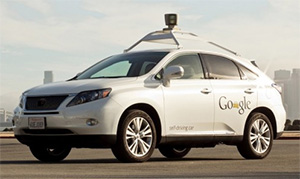You want to live life in the fast lane. Plus you want to text and drive.

I guess the next step will be cars texting each other while driving themselves.
Move to Nevada.
That’s where you can get behind the wheel of a self-automated car. On March 1, 2012, Nevada legalized the use of automated cars on its roads — the first state to do so. Nevada has also given Google the first-ever self-driven car license in the country.
Google’s self-driven cars rely on video cameras, radar sensors, lasers and a database of information collected from manually driven cars to help navigate, according to the company.
Think about it: You get in your car, put your seat belt on, hit a button called “work,” and then fire up your browser of choice and get a head start on your day — all while making the roads safer.
That’s right — safer.
Google reports that its self-driving cars have now logged more than 300,000 miles across a wide range of traffic conditions, and no vehicle has suffered from an accident while under computer control.
You may think this technology is just a flash in the pan. But consider the fact that Nevada has given licenses to Continental (a German automotive supply company) as well as Audi (the first automaker to be given one). And Audi may not be the lone automaker at the party for long. At last week’s 2013 CES show Audi — along with Toyota and Lexus — showed off its first-generation autonomous cars. In a promotional video a 2013 Lexus LX is equipped with Toyota’s “Intelligent Transport Systems” technology, which includes radar for monitoring the road environment and communicating with other vehicles.
I guess the next step will be cars texting each other while driving themselves.
Life in the fast lane, indeed.




